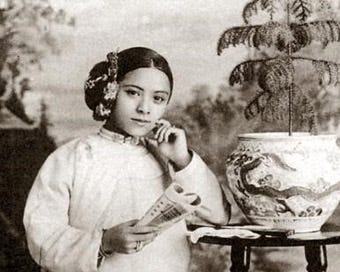Tye Leung was small in stature, standing just about 4'5." People called her "Tiny." But my, was she a force. While history remembers Tye as the first Chinese-American woman to vote, her story includes much more.
Tye was born in 1887 as the youngest of eight children in San Francisco's Chinatown. At the time, the area was a city within a city, with narrow streets winding between simple and worn wooden buildings that leaned close together and had signs in bold Chinese characters hanging over shop doors.
The community had formed a bit out of necessity, a refuge for Chinese immigrants who were welcomed for their labor but little else. A big swath had come during the Transcontinental Railroad construction. Many more immigrated after, looking for work opportunities as China endured economic hardship. However, this had slowed down throughout the 1880s as the newly passed Chinese Exclusion Act banned immigration from China for a decade. Anti-Chinese sentiment ran high, and opportunities for Chinese workers were severely limited.
For Tye and her family, like most families living in Chinatown, life came with many challenges. Some of her earliest memories were of scavenging leftover food from gambling houses. At nine, she began working as a domestic servant, a common experience for Chinese girls her age. But when Tye's parents attempted to marry her off to an older Chinese man in Montana, the young girl, just in her early teens, rebelled and ran away to the local Presbyterian Mission House. "I refused," she would later say about that marriage.
Keep reading with a 7-day free trial
Subscribe to Historical Snapshots to keep reading this post and get 7 days of free access to the full post archives.




